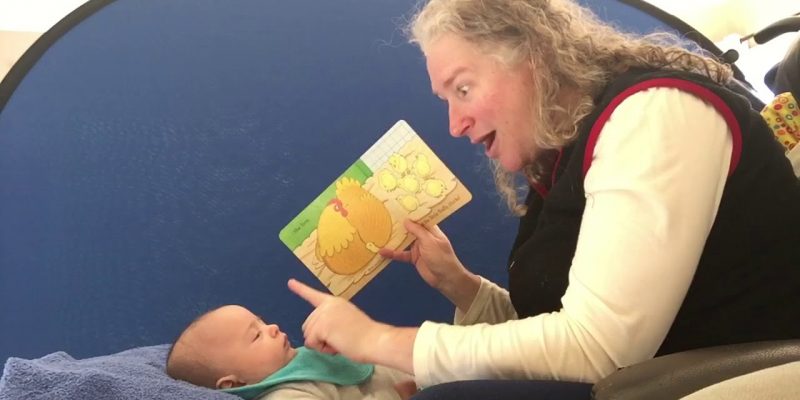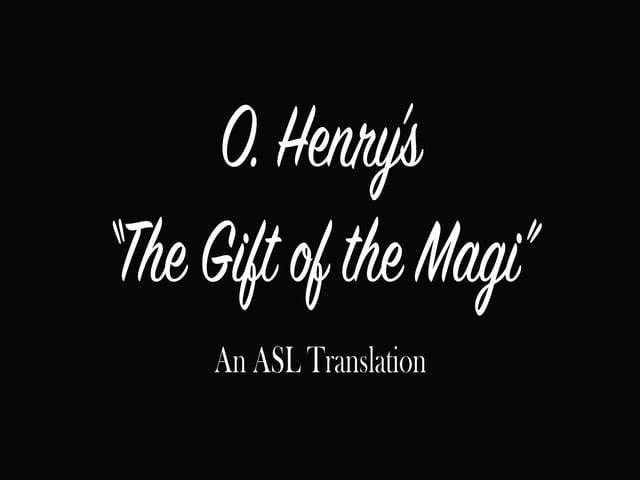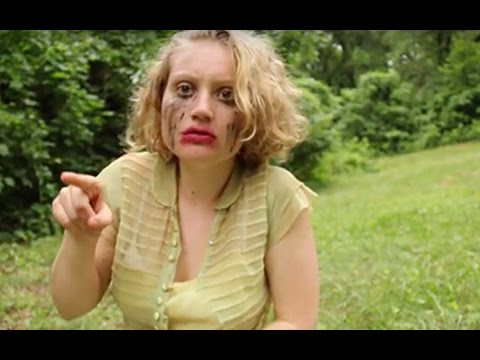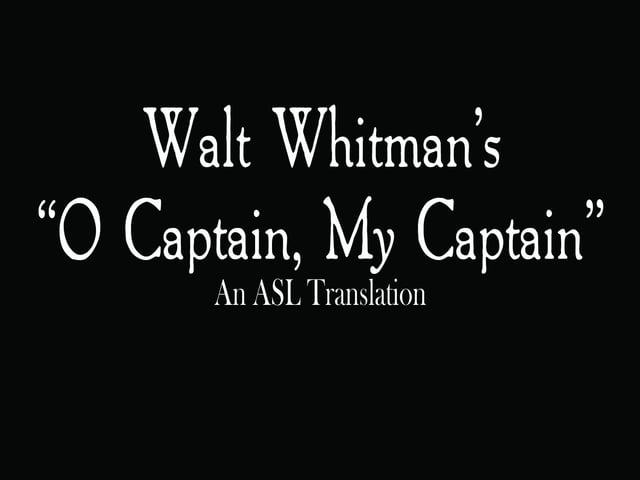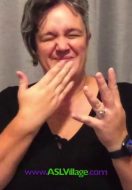Darlene is a deaf Australian woman sharing how to introduce literacy to her hearing child.
From her YouTUBE post:
It’s about how to read a book to your baby using sign language. This was a main question I've been asked on how to do that with deaf and hearing babies using sign language. Basically, using body, visual props, simple signs and some basic noises, the baby follows you easily n interact in his way. Already recognized about 10 signs consistently at the age of nearly 4 months old. Transcript provided below.
Transcript:
Hello I'm Darlene, and this is my baby – his name’s Torben. He is nearly 4 months old now. For past a month, I’ve started to sign the story from a book – just signing. He loves to watch me signing, as well as others too. He started to watch at the age of 2 months old, and really enjoyed watching people signing. I do not know if he understood or relate to anything we signed to him but there’s the exposure for him.
I wanted to show you how I interact with Torben on a book that we read together everyday. (to Torben) are you ready to read the book? Yes! The book is called “Farm Babies” by Rod Campbell. NOTE – Torben is a hearing baby, so I use some noises to keep focus on – he prefers visuals over noises though.
Those inside the brackets are the actions I did with Torben. (Taps on the book and waited for Torben to see the book and back to me before I started.) Farm (rub on tum as a sign for farm) animals… Yea! Let’s go for a walk and have a look (fingers walking up from his tum to shoulder). Look there – go for a walk and have a look (this time I added look on his cheek for LOOK).
Have a look what is that (with appropriate facial expression for questioning and finger guiding the tail on book). Oh! A cow, moo! (then on Torben’s head, cow and moo). Go for a walk and have a look. Ah! Sheep, baa! (on his head, sheep and on his tum – baa baa). Go for a walk and have a look. Ohh! Dog! (tapping on his leg twice and WOOF, using his hand, then a little action with fingers flicking his cheek as dog would lick – we have a dog here who do that to him so this is a good association to use.)
Go for a walk and have a look. Ahh! A rabbit, rabbit (on his head, then little hops all over his body before a bop on his nose.) Go for a walk and have a look. Oh. Pig OINK OINK (then on his nose Pig and oink, before squeeze his tum with more oink for variety.) Go for a walk and have a look. Ah! Ducks! Quack quack (this is his favourite – ‘quack, quack’ on his lips – this is tricky, but babies would do opposite and will self-correct later with better spatial awareness.) Go for a walk and have a look. Oh! Chooks BOK BOK BOK (same as above with index finger and thumb – bok bok, then ‘peck’ on his body.)
Yea… (Closes book) Oh finished the book. The reason why I am doing this is to show how to associate the signs, visual props, vocalisations and physical touches and incorporate them all into the book reading activity with the baby. This encourages the interaction between parent and baby, maintain eye contact and still allow dialogue and actions in order – babies acquired sign language in this way faster… as they understand more by association, especially when using the physical cues and repetitions.
Torben, for the last 2 months, has started to recognise some signs. Starting with POO and FEED, then added more signs over the time, around 5-6 signs. Such as: FEED/FOOD, BED, POO, NAPPY, BATH, CAR, DOG, BOOK, (what more do you know… ah) CLOTHING.
That’s it for now I think. So, the idea is to build up on the association of language with body as cues for locations and movements to encourage language acquisition and development for both deaf and hearing babies using sign language. Hope that helps? Thanks bye.





